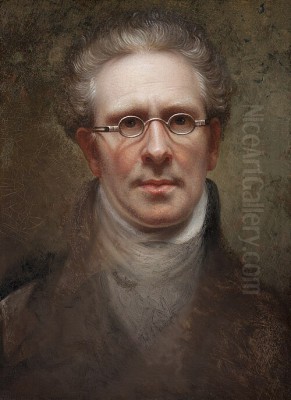
Rembrandt Peale stands as a significant figure in the landscape of early American art. Born into a family already renowned for its artistic and scientific pursuits, he carved out his own distinct identity as a painter, particularly celebrated for his portraiture, while also engaging deeply with natural history and contributing to the cultural infrastructure of the young United States. His life, spanning from the American Revolution's aftermath well into the antebellum period, witnessed and reflected the nation's burgeoning sense of self. His confirmed dates of life are February 22, 1778, to October 3, 1860.
Early Life and Artistic Formation
Born in Bucks County, Pennsylvania, Rembrandt Peale was the second son of the illustrious Charles Willson Peale. The Peale household was a crucible of creativity and intellectual curiosity, where art and science were not seen as separate disciplines but as interconnected ways of understanding the world. This environment profoundly shaped young Rembrandt. His artistic inclinations surfaced early; he began painting by the age of eight and, demonstrating remarkable precocity, completed his first self-portrait at the tender age of thirteen.
Under the direct tutelage of his father, Rembrandt received a comprehensive education that encompassed both the techniques of painting and the principles of scientific inquiry. Charles Willson Peale, himself a painter, naturalist, and museum founder, ensured his children were exposed to a wide range of knowledge. This dual foundation in art and science would inform Rembrandt Peale's work throughout his long and productive career, lending a unique dimension to his artistic practice.
The Influence of Charles Willson Peale
The impact of Charles Willson Peale on his son Rembrandt cannot be overstated. Beyond providing foundational training, the elder Peale instilled a strong work ethic and a sense of public duty. He actively promoted his children's talents, creating opportunities for them to develop and showcase their skills. The family name itself carried weight in the artistic circles of Philadelphia and beyond, opening doors for the younger generation.
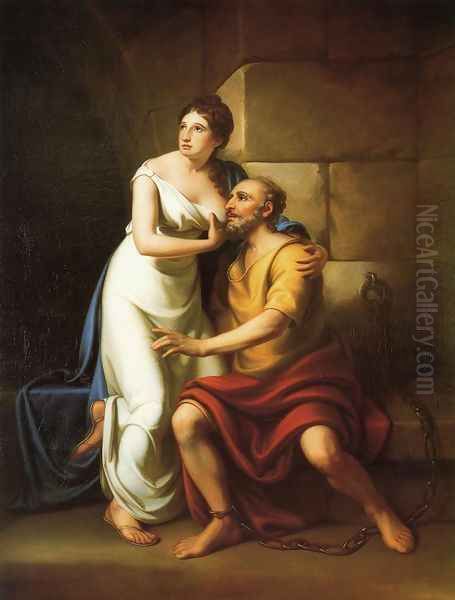
Rembrandt's early artistic efforts were naturally guided by his father's style and methods. However, he was also encouraged to find his own voice. The Peale family environment fostered not just technical skill but also intellectual engagement, pushing Rembrandt to think critically about his subjects and the purpose of his art. This upbringing prepared him not only to be a painter but also an active participant in the cultural and scientific life of his time.
Meeting the Founding Fathers
A pivotal moment in Rembrandt Peale's early career occurred in 1787. His father, Charles Willson Peale, facilitated an introduction to George Washington. This encounter provided the young artist, still in his teenage years, with the extraordinary opportunity to paint the portrait of the man who would become the nation's first president. This experience was not merely a prestigious commission; it placed Rembrandt among a select group of artists who captured the likeness of Washington from life.
His association with the nation's leaders continued. Peale would also become known for his portraits of Thomas Jefferson, another towering figure of American history. These commissions cemented his reputation as a portraitist capable of capturing the dignity and character of the new republic's most important figures. His depictions of Washington, in particular, would become a recurring theme and a source of both artistic challenge and financial sustenance throughout his life.
European Studies and Stylistic Development
Seeking to broaden his artistic horizons and refine his technique, Rembrandt Peale traveled to Europe. His time in London included study under the expatriate American painter Benjamin West, who presided over a studio that served as a crucial training ground for many aspiring artists from the United States. West's influence exposed Peale to the grand manner of history painting and the prevailing European artistic currents.
Subsequently, Peale spent time in Paris, immersing himself in the vibrant art scene there. He studied the masterpieces housed in the Louvre and the Luxembourg Gallery, absorbing the principles of French Neoclassicism. This style, characterized by its emphasis on order, clarity, and idealized forms, left a discernible mark on his work. However, Peale did not simply adopt European styles wholesale. He skillfully blended the structure and discipline of Neoclassicism with the sensitivity and emotional depth associated with Romanticism.
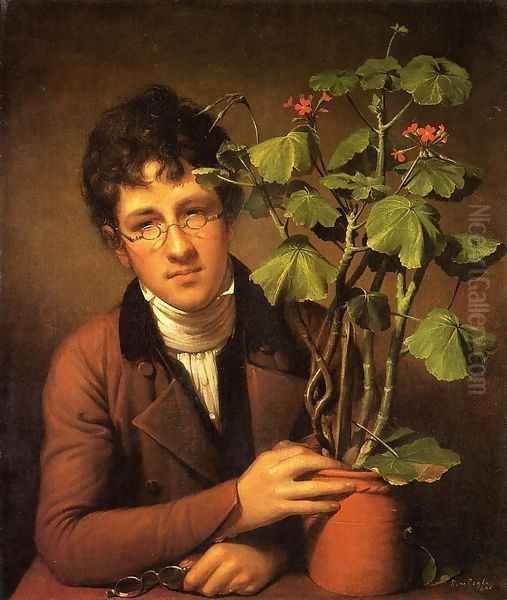
His style evolved to feature fluid lines and soft modeling, often imbuing his subjects with a gentle, sometimes indirect gaze, as seen in works like his portrait of Mrs. Koch. There is also evidence of his study of the Dutch master, Rembrandt Harmenszoon van Rijn, whose name he bore. This influence can perhaps be seen in Peale's attention to psychological depth and his use of stable compositional structures, sometimes employing simplification and geometrization of forms to enhance expressive power. His travels in Italy further enriched his understanding, exposing him to the works of Renaissance and Baroque masters.
Masterworks: Portraits and Allegories
Portraiture remained the cornerstone of Rembrandt Peale's artistic output. He was prolific, creating over a thousand works during his lifetime. His portraits were sought after for their skillful execution and insightful characterization. Among his most famous works are his depictions of George Washington. He returned to this subject repeatedly, culminating in his idealized "Porthole" portrait, known as Patriae Pater (Father of His Country). He created numerous replicas of this iconic image, which became one of the most recognizable likenesses of Washington.
Beyond portraiture, Peale also tackled ambitious allegorical and historical subjects. His most renowned work in this vein is The Court of Death, painted in 1820. This large, complex canvas is an allegory exploring themes of mortality, faith, and vice. Depicting various figures confronting Death, the painting achieved immense popularity during Peale's lifetime and after, touring the country and drawing large crowds. It showcased his ability to handle complex compositions and convey profound themes, demonstrating a different facet of his artistic talent beyond capturing individual likenesses.
The Peale Museum in Baltimore
Reflecting the Peale family's broad interests in art, science, and education, Rembrandt Peale embarked on an ambitious project in Baltimore. In 1812 (though some sources state 1814 as the opening), he established what is considered one of the first purpose-built public museum buildings in the United States. Initially known as "Peale's Baltimore Museum and Gallery of Fine Arts," it was designed to house not only paintings but also natural history specimens and scientific curiosities.
This venture embodied the Enlightenment ideals embraced by the Peale family – the belief in accessible knowledge and the interconnectedness of art and science. The museum aimed to educate and enlighten the public. However, despite its cultural significance, the museum faced financial difficulties. In 1822, Rembrandt Peale relinquished management of the Baltimore museum to his brother, Rubens Peale, and relocated to New York City to pursue his artistic career more focusedly. The building itself, however, remains a historic landmark.
Relationships with Contemporaries
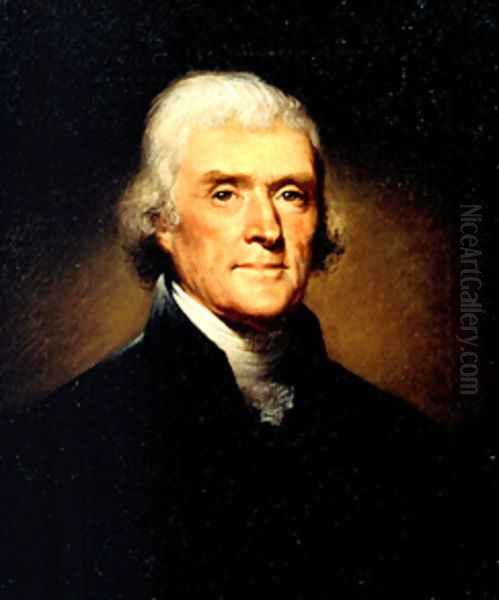
Rembrandt Peale operated within a dynamic network of artists in the early American republic. His career intersected with many prominent figures. He certainly knew of, and likely interacted with, leading portraitists such as Gilbert Stuart, whose own Washington portraits were highly influential, and Robert Edge Pine. The exchange of ideas and stylistic influences was common among artists of this period, and Peale's work reflects an awareness of his contemporaries' achievements while striving for his own distinct approach.
His collaborations often occurred within his own remarkable family. His brother, Rubens Peale, besides managing the museum, was also an artist and naturalist. Rubens' interest in botany may have inspired some of Rembrandt's works incorporating natural elements, such as the charming painting Little Brother in the Garden. Other artist brothers included Raphaelle Peale, known for his exquisite still lifes, and Titian Ramsay Peale, who gained fame as a naturalist and scientific illustrator. Rembrandt also had connections abroad, such as with the British actor George Clint, who was known to collect his work. Despite these interactions and influences, Peale's art retained what some critics have identified as a unique "American character," reflecting the nation's developing artistic identity separate from, yet informed by, European traditions. He was aware of major European figures like the Neoclassical giant Jacques-Louis David, whose work he would have seen in Paris.
European Ventures and Return
Driven by ambition and the desire for wider recognition, Rembrandt Peale made several attempts to establish himself and market his work in Europe, particularly during extended stays in the late 1800s and again around 1829-1830. He exhibited his paintings and sought commissions in England and France. While in Paris, he associated with notable French figures and artists, gaining a measure of respect within artistic circles there.
However, these European ventures did not yield the significant commercial success or critical acclaim he had hoped for. The established art markets of London and Paris proved difficult to penetrate for an American artist, even one of Peale's talent and reputation back home. These experiences left him somewhat disillusioned. Ultimately, Peale decided to return permanently to the United States, focusing his energies on the burgeoning art scene in his native country.
Later Career and Legacy
Upon his return to the United States, Rembrandt Peale settled primarily in Philadelphia, though he also spent time in New York. He remained active as a painter and continued to produce portraits, including further replicas of his popular Washington likeness. He also dedicated himself to lecturing and writing, sharing his knowledge of art history and technique. His "Graphics: A Manual of Drawing and Writing" became a standard textbook.
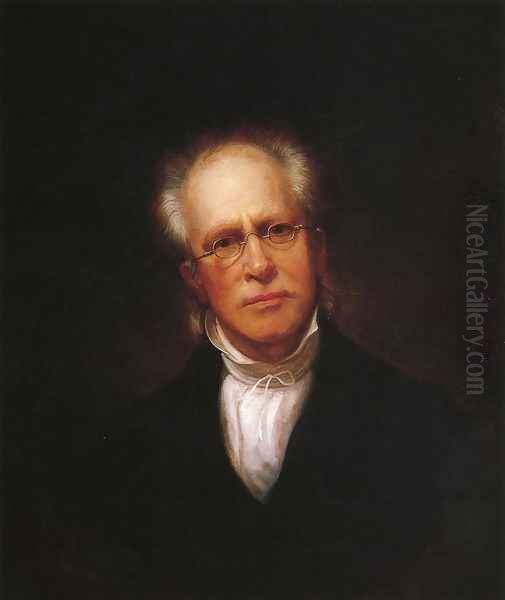
He played a role in the institutional development of American art. In the 1820s and 1830s, he was involved in the artistic communities of New York and Philadelphia and became one of the founding members of the National Academy of Design in New York, an important institution established by artists like Samuel F.B. Morse and Thomas Cole to promote American art and provide exhibition opportunities. His long career ensured his influence was felt across several generations of American artists.
The Peale Family Dynasty
Rembrandt Peale was a central figure in what is often called the "Peale Dynasty," America's first family of art. His father, Charles Willson Peale, was the patriarch, but Rembrandt, along with his brothers Raphaelle, Rubens, and Titian Ramsay Peale, significantly contributed to the family's artistic and scientific legacy. Each brother specialized in different areas – Rembrandt in portraiture and history painting, Raphaelle in still life, Rubens in museum management and later painting, and Titian in natural history illustration.
Within this talented family, Rembrandt emerged as arguably the most accomplished and versatile painter in the traditional sense. He inherited his father's technical skills and broad intellectual curiosity but developed his own sophisticated style, influenced by his European studies. He successfully navigated the demands of portrait commissions while also pursuing more ambitious allegorical works, solidifying his position as a leading artist of his generation and a crucial link in the chain of the Peale family's remarkable contribution to American culture. His work exemplifies the transition of American art from its colonial roots towards a more distinct national identity.
Conclusion
Rembrandt Peale's life and career offer a rich tapestry woven with artistic achievement, scientific curiosity, and entrepreneurial spirit. As a painter, he excelled in portraiture, capturing the likenesses of presidents and ordinary citizens with skill and sensitivity, blending Neoclassical structure with Romantic feeling. His historical and allegorical works, like The Court of Death, demonstrated his ambition and ability to engage with grand themes. Beyond his canvas, he was a writer, a lecturer, a naturalist, and the founder of an important early museum, embodying the Enlightenment ideal of the versatile, publicly engaged citizen.
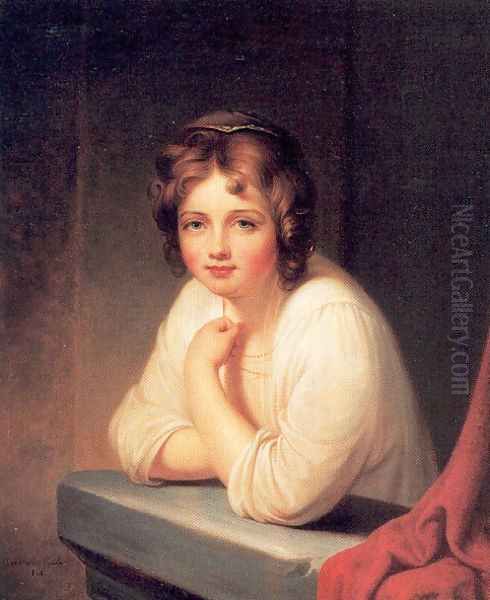
He navigated the challenges of being an American artist in an era still heavily influenced by European standards, contributing significantly to the development of a distinctly American art tradition. As a key member of the Peale family, he inherited a legacy and built upon it, leaving behind a vast body of work that continues to be studied and admired. Rembrandt Peale passed away on October 3, 1860, in Philadelphia, the city where much of his career unfolded. He was laid to rest in The Woodlands Cemetery, leaving behind a legacy as one of the foundational figures of American art history.